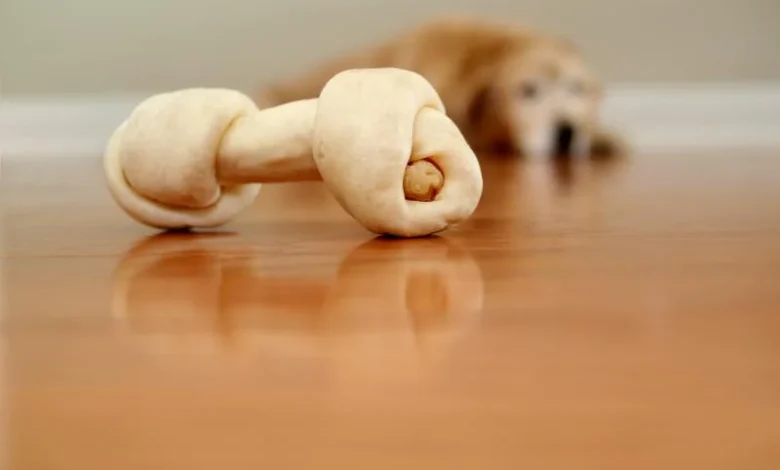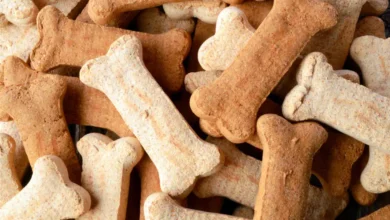Is Beef Hide Bad for Dogs?

You’ve seen it before—your furry friend happily gnawing on a chew, tail wagging with pure joy. That moment feels perfect… until doubt creeps in. Could this treat harm them? For many pet parents, the safety of popular chews like rawhide or beefhide becomes a quiet worry tucked between love and responsibility.
Chews made from animal skins are widely used, but their safety isn’t black-and-white. How they’re processed plays a huge role. Some products undergo natural drying, while others use chemicals to speed production. Additives like artificial flavors or preservatives can also impact your pup’s well-being.
On one paw, these chews help clean teeth and satisfy natural instincts. On the other, poorly made options may splinter or swell in the stomach. Choosing the right size matters too—a piece too small could become a choking hazard.
This article will guide you through the pros and cons, from sourcing to manufacturing practices. You’ll learn how to spot safer products and make informed choices for your four-legged family member.
Introduction: The Debate on Dog Chews
In every pet store aisle, rawhide products beckon as solutions for canine boredom. These long-lasting treats promise hours of chewing satisfaction, making them a top pick for owners seeking peace and quiet. But beneath their popularity lies a heated discussion about safety and quality.
Manufacturing practices drive much of the controversy. Some brands use natural drying methods, while others rely on chemical treatments to speed production. This split creates confusion: can you trust labels claiming “digestible” or “all-natural”?
Your pet’s traits matter too. Consider these factors:
- Size: Small breeds may struggle with large chews, increasing choking risks
- Chewing style: Aggressive gnawers break pieces faster than gentle nibblers
- Age: Puppies’ developing teeth need softer options
While some products support dental health by scraping plaque, others contain artificial flavors or preservatives. The key lies in researching brands and understanding processing steps. This guide will unpack industry standards, ingredient lists, and expert recommendations to help you choose wisely.
What is Beef Hide? Production and Natural Processing

Ever wonder what gives your pup’s favorite chew its texture? This material starts as the inner layer of cow skin, cleaned and shaped into durable chews. Manufacturers source these animal byproducts directly from slaughterhouses, transforming them into long-lasting treats through specific methods.
Sourcing and Processing Methods
Raw materials undergo rigorous preparation. First, workers remove hair and fat using high-salt brines or lime solutions. American producers often prioritize natural drying over chemical shortcuts, preserving the health benefits of the final product. This step-by-step approach minimizes contamination risks while maintaining chew integrity.
Comparing Manufacturing Techniques
Production quality varies globally. U.S. facilities typically follow stricter industry regulations, avoiding harmful additives like formaldehyde. Overseas operations sometimes use accelerated chemical treatments to cut costs, compromising safety. Always check labels for processing details—transparency separates trustworthy products from questionable ones.
Understanding these steps helps you choose safer options. Look for brands that disclose sourcing locations and avoid artificial preservatives. Your vigilance ensures every chew supports your pet’s well-being without hidden risks.
Related post: Can Dogs Eat Sauerkraut?
The Science Behind Rawhide: What You Need to Know
What’s really inside those chews your pet loves? Understanding rawhide production reveals why texture and safety vary widely. Manufacturing starts with rigorous treatments to transform raw materials into durable products.
Ingredients and Chemical Treatments
Lime solutions break down collagen fibers during soaking, creating the chew’s firm structure. Acid rinses later neutralize alkaline residues. Some manufacturers add dyes for visual appeal, though these pigments offer no health benefits.
| Processing Step | Purpose | Safety Considerations |
|---|---|---|
| Lime Soaking | Softens hides | Residues may irritate sensitive stomachs |
| Acid Rinsing | Balances pH levels | Reduces chemical exposure |
| Dyeing | Enhances appearance | Artificial colors linked to allergies |
Digestibility and Safety Considerations
Rawhide breaks into chunks when chewed aggressively. These pieces can swell in the digestive tract, raising blockage risks. Gentle chewers face fewer issues, but supervision remains critical.
Always rinse products before use to remove surface chemicals. Match chew size to your pet’s jaw strength—larger options last longer and reduce swallowing hazards. While these treats support oral health by scraping plaque off teeth, they’re not fully digestible like protein-based snacks.
is beef hide bad for dogs? A Detailed Comparison
Not all chews labeled as “natural” meet the same standards. Understanding the difference between rawhide and beefhide starts with their origins. While all beefhide comes from cows, generic rawhide may mix skins from multiple animals. This distinction affects safety and digestibility.
Transparency in Sourcing
Clear labeling matters. Products specifying “beefhide” confirm cow-sourced materials, reducing mystery ingredients. Brands listing country of origin often follow stricter processing rules. For example, U.S.-made chews typically avoid harsh chemicals banned in pet products.
Impact of Additives and Processing
Chemical treatments separate high-quality options from risky ones. Some rawhide treats contain artificial dyes linked to allergic reactions. Others use formaldehyde-based preservatives during overseas production. These residues can irritate your pet’s digestive system over time.
Safer choices prioritize single-ingredient chews without coatings or flavorings. Check packaging for terms like “no artificial additives” or “100% natural.” Always supervise chewing sessions to prevent large chunks from breaking off.
When comparing alternatives to rawhide, consider your dog’s chewing habits. Consult your vet about digestible options like collagen sticks or vegetable-based chews. Your vigilance ensures playtime stays both fun and safe.
Benefits and Risks of Beef Hide and Rawhide Chews
Chewing sessions can strengthen bonds between pets and owners, but hidden dangers lurk in popular choices. Understanding both advantages and pitfalls helps you protect your companion while satisfying their instincts.
Health Implications and Oral Health Benefits
Gnawing on durable materials scrapes plaque off teeth, acting like nature’s toothbrush. This mechanical action reduces tartar buildup and supports gum health. Vigorous chewers may also develop stronger jaw muscles over time.
| Benefit | Risk | Prevention Tip |
|---|---|---|
| Plaque reduction | Choking on large chunks | Choose size-appropriate products |
| Mental stimulation | Digestive issues | Supervise chewing sessions |
| Stress relief | Chemical exposure | Select additive-free chews |
Choking Hazards and Digestive Risks
Aggressive gnawing breaks chews into swallowable pieces that expand in the stomach. One veterinary study notes:
“Undigested fragments account for 12% of emergency bowel obstruction cases.”
Three factors determine safety:
- Chewing intensity (gentle vs. power-gnawers)
- Product density (hardness affects breakage speed)
- Manufacturing quality (chemical residues linger in some imports)
Consider alternatives like buffalo horns or vegetable-based treats for sensitive pets. Always inspect chews for sharp edges and replace them when worn down. Your vigilance turns snack time into a benefit-rich experience.
Factors to Consider When Choosing Dog Chews

How do you pick the perfect chew that keeps tails wagging without hidden risks? The answer lies in matching products to your companion’s unique needs. Size, chewing habits, and life stage all play critical roles in finding safe options.
Chewing Style and Physical Traits
Size matters more than you think. A Great Dane needs thicker, longer-lasting chews compared to a Chihuahua. Measure your pet’s jaw width to avoid pieces that could lodge in their throat. Observe their gnawing intensity—does your pal shred toys within minutes or savor them for days?
Life Stage and Breed-Specific Needs
Puppies’ developing teeth require softer materials, while seniors might prefer gentler options for worn-down molars. Breeds like Terriers often chew aggressively, demanding ultra-durable products. A 2023 veterinary survey found:
“73% of choking incidents involve chews mismatched to the animal’s size.”
| Dog Size | Chew Type | Supervision Tips |
|---|---|---|
| Small (under 20 lbs) | Flexible, thin strips | Remove pieces smaller than a walnut |
| Medium (20-50 lbs) | Knot-shaped chews | Check for frayed edges hourly |
| Large (50+ lbs) | Dense, thick rolls | Limit sessions to 30 minutes |
Always watch your pet during treat time. Research brands that disclose ingredient sources and avoid imported rawhide with unclear processing methods. Your attention turns snack time into both joy and safety.
Natural Alternatives: Beyond Traditional Hides
Pet owners seeking safer options now have exciting choices beyond standard chews. These alternatives to rawhide provide mental stimulation while supporting your companion’s well-being. Let’s explore options that combine safety with nutritional perks.
Nutrient-Rich Animal-Based Options
Cow hooves offer durability for power chewers, naturally scraping plaque during gnawing sessions. Beef ears provide a lighter option rich in cartilage, which supports joint health. Both options lack the chemical treatments found in many rawhide products.
- Single-ingredient chews minimize allergy risks
- Natural textures clean teeth without artificial additives
- Minimal processing preserves nutritional value
Hypoallergenic Innovations
Sensitive pups thrive with options like shark skin rolls or sweet potato chews. These products often contain:
| Alternative | Key Benefit | Best For |
|---|---|---|
| Collagen sticks | Easily digestible | Dogs with sensitive stomachs |
| Yak milk chews | High calcium content | Growing puppies |
| Coconut fiber rolls | Dental cleaning + fiber | Senior companions |
Veterinarian Dr. Lisa Freeman notes:
“Natural chews with visible sourcing reduce exposure to harmful residues.”
Always supervise your pet and select sizes matching their chewing intensity. Thesetreatsturn snack time into a health-boosting ritual.
Enhancing Your Dog’s Oral Health Through Chewing
Chewing does more than entertain your companion—it’s a natural dental care ritual. When selected carefully, chews act as tools to maintain fresh breath and healthy gums. Let’s explore how these products contribute to oral wellness while addressing safety concerns.
Teeth-Cleaning Benefits of Chewing
Gnawing on textured surfaces scrapes away plaque like a natural toothbrush. Durable materials rub against teeth, reaching areas regular brushing might miss. Veterinary studies show:
“Pets using dental chews daily experience 25% less tartar buildup than those without.”
| Chew Type | Effectiveness | Duration |
|---|---|---|
| Rubber toys | Moderate scrubbing | Long-lasting |
| Rawhide alternatives | High abrasion | 30-60 minutes |
| Vegetable-based sticks | Gentle cleaning | 15-20 minutes |
Strengthening Jaw Muscles Safely
Regular chewing sessions build jaw strength through resistance. Opt for thicker treats that require effort without risking tooth fractures. Key considerations:
- Match chew hardness to your pet’s bite force
- Replace worn-down pieces immediately
- Supervise to prevent aggressive shredding
Dr. Emily Carter, a veterinary dentist, advises:
“Rotate chew types weekly to engage different muscle groups while monitoring gum health.”
Selecting the right size prevents choking hazards—choose options longer than your pet’s muzzle width. Pair these products with annual dental checkups for comprehensive care. Your attention turns every chew into a step toward lifelong vitality.
Conclusion
Choosing the right chew for your canine companion isn’t just about convenience—it’s a safety decision that echoes through every wagging tail. Beefhide and rawhide differ in production quality, with U.S.-made options often avoiding harsh chemicals found in imported products. Always prioritize brands sharing detailed sourcing practices.
While these treats offer dental benefits and mental stimulation, risks like choking or digestive issues demand vigilance. Match chew size to your pet’s jaw strength, and supervise sessions to remove dangerous fragments. Remember: even “natural” labels don’t guarantee safety without transparency.
Consult your vet about alternatives like collagen sticks if your dog swallows pieces whole. Balance treat frequency with their regular diet—overindulgence can lead to weight gain. The best dog chews align with your pal’s chewing style while supporting overall health.
Ultimately, informed choices start with understanding what you give dog companions. Prioritize single-ingredient options and trust brands that disclose manufacturing steps. Your attention turns every gnawing session into a blend of joy and well-being.
FAQ
How does rawhide differ from beefhide chews?
Rawhide is made from the inner layer of cow or horse hides, while beefhide comes specifically from cattle. Beefhide is often thicker and less processed, making it a denser option for aggressive chewers. Both undergo similar manufacturing, but sourcing transparency varies by brand.
Can chewing rawhide improve my dog’s dental health?
Yes, when used responsibly. Gnawing on rawhide or beefhide can reduce plaque and tartar buildup by scraping against teeth. However, always supervise your pet to prevent large chunks from breaking off, which could pose choking risks.
What are safer alternatives to traditional hide chews?
Consider cow hooves, buffalo horns, or pork skin rolls. Brands like Earth Animal offer collagen chews, while bully sticks (dried bull pizzles) provide long-lasting enrichment. For sensitive dogs, freeze-dried liver or yak milk chews are digestible options.
Why might some dogs have stomach issues after eating rawhide?
Low-quality products may contain chemical residues or artificial preservatives that irritate the digestive tract. Overconsumption can also cause blockages. Opt for naturally processed hides and limit chew time to 30-minute sessions.
How do I choose the right chew for my dog’s size?
Match the chew’s durability to your pet’s bite strength. Small breeds or puppies do well with softer options like lamb ears, while large breeds may need extra-thick beefhide. Avoid giving compact treats to heavy chewers—they’re more likely to swallow chunks whole.
Are there benefits to using cow hooves over rawhide?
Cow hooves are longer-lasting and less likely to splinter than rawhide. They’re rich in keratin, which supports nail and coat health. However, their hard texture might risk tooth fractures in dogs with weaker enamel.
What additives should I avoid in dog chews?
Steer clear of bleached or flavored products containing titanium dioxide, sodium sulfate, or artificial dyes. Look for labels stating “no chemical treatments” or “single-ingredient” to ensure safer consumption.
How often should I give my dog hide-based treats?
Moderation is key. Offer these chews 2–3 times weekly to avoid calorie overload or intestinal irritation. Always provide fresh water during chewing sessions to aid digestion.





